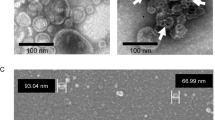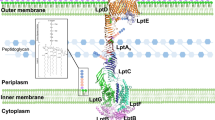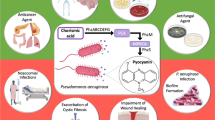Abstract
Aeromonas hydrophila has been implicated in extra-intestinal infection and diarrhoea in humans. Targetting unique effectors of bacterial pathogens is considered a powerful strategy for drug design against bacterial variations to drug resistance. The two-component bacterial system involving sensor histidine kinase (SHK) and its response regulators is considered a lucrative target for drug design. This is the first report describing a three-dimensional (3D) structure for SHK of A. hydrophila. The model was constructed by homology modelling using the X-ray structure of PleD—a response regulator—in conjunction with cdiGMP (PDB code 1W25) and HemAT sensor domain (PDB code 1OR4)—a globin coupled sensor. A combination of homology modelling methodology and molecular dynamics (MD) simulations was applied to obtain a reasonable structure to understand the dynamic behaviour of SHK. Homology modelling was performed using MODELLER9v2 software. The structure was relaxed to eliminate bad atomic contacts. The final model obtained by molecular mechanics and dynamics methods was assessed using PROCHECK and VERIFY 3D graph, which confirmed that the final refined model is reliable. Until complete biochemical and structural data of SHK are determined by experimental means, this model can serve as a valuable reference for characterising the protein and could be explored for drug targetting by design of suitable inhibitors.








Similar content being viewed by others
Abbreviations
- SHK:
-
Sensor histidine kinase
- EM:
-
Energy minimisation
- BLAST:
-
Basic local alignment search tool
- MDS:
-
Molecular dynamics simulation
References
Altwegg M, Geiss HK (1989) Aeromonas as a human pathogen. Crit Rev Microbiol 16:253–286
Janda JM, Duffey PS (1988) Mesophilic aeromonads in human disease: current taxonomy, laboratory identification, and infectious disease spectrum. Rev Infect Dis 10:980–997
USEPA (1998) Announcement of the drinking water contaminant candidate list: Notice Federal Register. 63:10274–10287
Annapurna E, Sanyal SC (1977) Enterotoxicity of Aeromonas hydrophila. J Med Microbiol 10:317–323
Burke V, Robinson J, Atkinson HM, Gracey M (1982) Biochemical characteristics of enterotoxigenic Aeromonas spp. J Clin Microbiol 15:48–52
Chakraborty T, Montenegro MA, Sanyal SC, Helmuth R, Bulling E, Timmis KN (1984) Cloning of enterotoxin gene from Aeromonas hydrophila provides conclusive evidence of production of a cytotonic enterotoxin. Infect Immun 46:435–441
Singh DV, Sanyal SC (1992) Production of haemolysis and its correlation with enterotoxicity in Aeromonas spp. J Med Microbiol 37:262–267
Singh DV, Sanyal SC (1992) Biochemical characteristics and enterotoxicity of Aeromonas species isolated from man and environment. J Diarrhoeal Dis Res 10:231–234
Singh DV, Sanyal SC (1993) Haemagglutinating activity, serum sensitivity and enterotoxigenicity of Aeromonas spp. J Med Microbiol 38:49–53
Khalil AH, Mansour EH (2003) Toxicity of crude extracellular products of Aeromonas hydrophila in tilapia, Tilapianilotica. Lett Appl Microbiol 25:269–273
Stock AM, Robinson VL, Goudreau PN (2000) Two-component signal transduction. Annu Rev Biochem 69:183–215
Seshadri R, Joseph SW, Chopra AK, Sha J, Shaw J, Graf J, Haft D, Wu M, Ren Q, Rosovitz MJ, Madupu R, Tallon L, Kim M, Jin S, Vuong H, Stine OC, Ali A, Horneman AJ, Heidelberg JF (2006) Genome sequence of Aeromonas hydrophila ATCC 7966T: jack of all trades. J Bacteriol 188:8272–8282
Mascher T, Helmann JD, Unden G (2006) Stimulus perception in bacterial signal-transducing histidine kinases. Microbiol Mol Biol Rev 70:910–938
Volz K (1993) Structural conservation in the CheY superfamily. Biochemistry 32:11741–11753
Paul R, Weiser S, Amiot NC, Chan C, Schirmer T, Giese B, Jenal U (2004) Cell cycle-dependent dynamic localization of a bacterial response regulator with a novel di-guanylate cyclase output domain. Genes Dev 18:715–727
Ryan RP, Fouhy Y, Lucey JF, Dow JM (2006) Cyclic di-GMP signaling in bacteria: recent advances and new puzzles. J Bacteriol 188:8327–8334
Vila J, Marco F, Soler L, Chacon M, Figueras MJ (2002) In vitro antimicrobial susceptibility of clinical isolates of Aeromonas caviae, Aeromonas hydrophila and Aeromonas veronii biotype sobria. J Antimicrob Chemother 49:701–702
Huddleston JR, Zak JC, Jeter RM (2006) Antimicrobial susceptibilities of Aeromonas spp. isolated from environmental sources. Appl Environ Microbiol 72:7036–7042
Barett JF, Hoch JA (1998) Two-component signal transduction as a target for microbial anti-infective therapy. Antimicrob Agents Chemother 42:1529–1536
Rasko DA, Moreira CG, de Li R, Reading NC, Ritchie JM, Waldor MK, Williams N, Taussig R, Wei S, Roth M, Hughes DT, Huntley JF, Fina MW, Falck JR, Sperandio V (2008) Targeting QseC signaling and virulence for antibiotic development. Science 321:1078–1080
Sharma V, Gupta P, Dixit A (2008) In silico identification of putative drug targets from different metabolic pathways of Aeromonas hydrophila. In Silico Biol 8:331–338
Altschul SF, Gish W, Miller W, Myers EW, Lipman DJ (1990) Basic local alignment search tool. J Mol Biol 215:403–410
Berman HM, Westbrook J, Feng Z, Gilliland G, Bhat TN, Weissig H, Shindyalov IN, Bourne PE (2000) The protein data bank. Nucleic Acids Res 28:235–242
Thompson JD, Higgins DG, Gibson TJ (1994) CLUSTAL W: improving the sensitivity of progressive multiple sequence alignment through sequence weighting, position-specific gap penalties and weight matrix choice. Nucleic Acids Res 22:4673–4680
Sali A, Blundell TL (1993) Comparative protein modeling by satisfaction of spatial restraints. J Mol Biol 234:779–815
Laskoswki RA, MacArthur MW, Moss DS, Thornton JM (1993) PROCHECK: a program to check the stereochemical quality of protein structures. J Appl Crystallogr 26:283–291
Eisenberg D, Luthy R, Bowie JU (1997) VERIFY3D: assessment of protein models with three-dimensional profiles. Methods Enzymol 277:396–404
Brooks BR, Bruccoleri RE, Olafson BD, States DJ, Swaminathan S, Karplus M (1993) CHARMM: a program for macromolecular energy minimization and dynamics calculations. J Comput Chem 4:187–217
Frishman D, Argos P (1995) Knowledge-based protein secondary structure assignment. Proteins 23:566–579
Skerker JM, Perchuk BS, Siryaporn A, Lubin EA, Ashenberg O, Goulian M, Laub MT (2008) Rewiring the specificity of two-component signal transduction systems. Cell 133:1043–1054
Cserzo M, Wallin E, Simon I, von Heijne G, Elofsson A (1997) Prediction of transmembrane alpha-helices in prokaryotic membrane proteins: the dense alignment surface method. Protein Eng 10:673–676
Tusnady GE, Simon I (1998) Principles governing amino acid composition of integral membrane proteins: application to topology prediction. J Mol Biol 283:489–506
Krogh A, Larsson B, von Heijne G, Sonnhammer EL (2001) Predicting transmembrane protein topology with a hidden Markov model: application to complete genomes. J Mol Biol 305:567–580
Hofmann K, Stoffel W (1993) TMbase—a database of membrane spanning proteins segments. Biol Chem Hoppe Seyler 374(166–171):166–171
Marchler-Bauer A, Anderson JB, Derbyshire MK, DeWeese-Scott C, Gonzales NR, Gwadz M, Hao L, He S, Hurwitz DI, Jackson JD, Ke Z, Krylov D, Lanczycki CJ, Liebert CA, Liu C, Lu F, Lu S, Marchler GH, Mullokandov M, Song JS, Thanki N, Yamashita RA, Yin JJ, Zhang D, Bryant SH (2007) CDD: a conserved domain database for interactive domain family analysis. Nucleic Acids Res 35:D237–D240
Altschul SF, Madden TL, Schaffer AA, Zhang J, Zhang Z, Miller W, Lipman DJ (1997) Gapped BLAST and PSI-BLAST: a new generation of protein database search programs. Nucleic Acids Res 25:3389–3402
Altschul SF, Wootton JC, Gertz EM, Agarwala R, Morgulis A, Schaffer AA, Yu YK (2005) Protein database searches using compositionally adjusted substitution matrices. FEBS J 272:5101–5109
Hou S, Freitas T, Larsen RW, Piatibratov M, Sivozhelezov V, Yamamoto A, Meleshkevitch EA, Zimmer M, Ordal GW, Alam M (2001) Globin-coupled sensors: a class of heme-containing sensors in Archaea and Bacteria. Proc Natl Acad Sci USA 98:9353–9358
Rodgers KR (1999) Heme-based sensors in biological systems. Curr Opin Chem Biol 3:158–167
Subbarao N, Haneef I (1991) Defining topological equivalences in macromolecules. Protein Eng 4:877–884
Chan C, Paul R, Samoray D, Amiot NC, Giese B, Jenal U, Schirmer T (2004) Structural basis of activity and allosteric control of diguanylate cyclase. Proc Natl Acad Sci USA 101:17084–17089
Pei J, Grishin NV (2001) GGDEF domain is homologous to adenylyl cyclase. Proteins 42:210–216
Acknowledgements
The study was supported by funds contributed by the Department of Biotechnology to the Institute of Life Sciences, Bhubaneswar, India. A Senior Research Fellowship to M.H.U.T.F. awarded by Indian Council of Medical Research, New Delhi is kindly acknowledged. S.K. was supported by Distributed Information Sub-centre of Institute of Life Sciences, Bhubaneswar. We thank Dr. Sanjeev Kumar Singh and Mr. Sunil Tripathi for their help with the molecular dynamics simulation study.
Author information
Authors and Affiliations
Corresponding author
Additional information
Mobashar Hussain Urf Turabe Fazil and Sunil Kumar contributed equally to this work.
Rights and permissions
About this article
Cite this article
Fazil, M.H.U.T., Kumar, S., Subbarao, N. et al. Homology modelling of a sensor histidine kinase from Aeromonas hydrophila . J Mol Model 16, 1003–1009 (2010). https://doi.org/10.1007/s00894-009-0602-2
Received:
Accepted:
Published:
Issue Date:
DOI: https://doi.org/10.1007/s00894-009-0602-2




